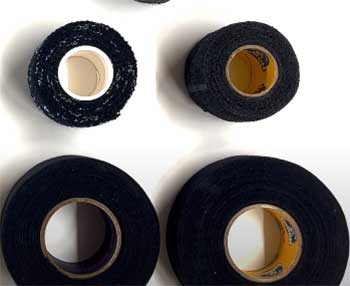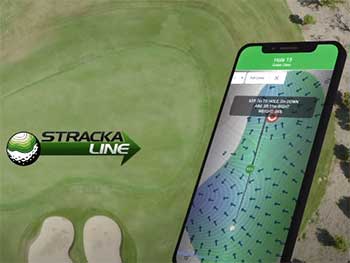I’ve pounded the pavement in both On Cloud and Brooks shoes, and I’m here to share my journey to help you pick the perfect pair.
As a runner, I’ve tested their comfort, cushioning, and performance to see which brand delivers.
With a comparison table, pros, cons, and real-world insights, this article breaks down what makes each brand shine.
Whether you’re chasing speed or stability, you’ll find your fit.
Lace up and let’s explore which shoe deserves a spot in your rotation!
Comparison Table: On Cloud Vs. Brooks
| Feature | On Cloud | Brooks |
| Cushioning | CloudTec pods, responsive, light | DNA Loft/BioMoGo, plush, adaptive |
| Weight | Lightweight (e.g., Cloudsurfer 2: 8.2 oz men’s) | Heavier (e.g., Ghost 17: 10.1 oz men’s) |
| Heel-to-Toe Drop | 6-11 mm (model-dependent) | 8-12 mm (model-dependent) |
| Stability | Neutral, natural motion | Strong stability, GuideRails for overpronation |
| Durability | 300-500 miles | 300-500 miles |
| Fit | Narrow, snug heel | Roomy toe box, wider fit |
| Best For | Speed, uptempo runs, versatile wear | Long runs, stability, wide feet |
| Price Range | $130-$180 | $100-$160 |
My Journey with On Cloud and Brooks
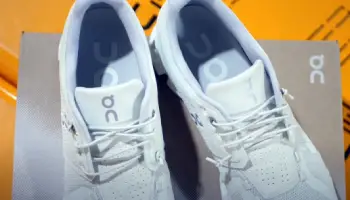
I’ve been running for years, logging miles on roads, trails, and treadmills, and I’ve always been picky about my shoes.
When I decided to compare On Cloud and Brooks, I wanted to see how these two powerhouses stack up in real-world conditions.
I tested the On Cloudsurfer 2 and Brooks Ghost 17, two popular daily trainers, over six weeks, running 4-5 times weekly on varied terrains—city streets, park paths, and gym treadmills.
Each run ranged from 3-mile sprints to 10-mile long hauls, giving me a solid feel for their performance.
Slipping into the On Cloudsurfer 2, I was struck by its lightness (8.2 oz for men’s size 9).
The CloudTec pods—those distinctive hollow pockets on the sole—gave a springy, responsive feel, like bouncing on mini trampolines.
My first 5K felt effortless, with the Helion superfoam midsole pushing me forward on each stride.
The shoe hugged my narrow feet snugly, though the heel felt a bit tight at first.
On a 7-mile run, the cushioning absorbed impact well, but I noticed less plushness compared to other brands.
Switching to the Brooks Ghost 17, I felt like my feet were cradled in pillows.
At 10.1 oz, it’s heavier, but the DNA Loft v3 foam delivered a soft, forgiving ride.
Running on concrete, the shoe’s 10 mm drop and wide base kept my strides stable, especially since I tend to overpronate slightly.
The roomy toe box was a godsend for my wider forefoot, preventing any pinching during a 10-mile run.
By the end, my knees felt fresher than with On Cloud, though I missed the bouncy energy return.
Both brands impressed me, but they cater to different vibes.
On Cloud felt like a sporty coupe—fast and agile—while Brooks was a reliable SUV, built for comfort and long journeys.
My runs taught me that your choice depends on your stride, goals, and foot shape.
About On Cloud and Brooks
On Running, a Swiss brand founded in 2010 by Olivier Bernhard, a former Ironman champion, focuses on innovative design with its CloudTec technology—hollow pods that compress for cushioning and rebound for energy.
Models like the Cloudsurfer 2 ($150) and Cloudflow 4 ($160) target runners seeking speed and versatility.
Brooks, a Seattle-based brand since 1914, prioritizes biomechanics and stability, using DNA Loft and BioMoGo DNA foams for adaptive cushioning.
Popular models like the Ghost 17 ($140) and Adrenaline GTS 24 ($140) cater to runners needing support and durability.
Both brands focus on running-specific shoes, unlike broader brands like Nike.
Pros and Cons of On Cloud Running Shoes
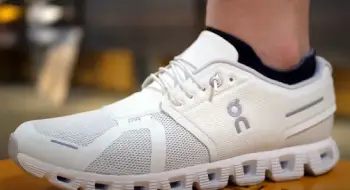
Pros:
- Lightweight design: Models like Cloudsurfer 2 (8.2 oz) feel airy and agile.
- Responsive cushioning: CloudTec pods provide springy energy return.
- Sleek aesthetics: Modern, stylish look for running and casual wear.
- Breathable uppers: Mesh keeps feet cool during long runs.
- Versatile use: Great for uptempo runs, gym workouts, or daily wear.
- Innovative tech: Speedboard plate enhances propulsion.
- Smooth transitions: Pods support natural foot motion.
- Durable materials: Lasts 300-500 miles with proper care.
- Wide color options: Appeals to style-conscious runners.
- Quick-lace system: Cloud 5’s lacing is fast and adjustable.
Cons:
- Narrow fit: Can feel snug for wider feet.
- Less plush cushioning: Not as soft as maximalist shoes.
- Limited stability: Minimal support for overpronators.
- Pricey: $130-$180 range is higher than some competitors.
- Stiff ride: TPU plate in some models reduces flexibility.
- Heel discomfort: Some report pressure from snug heel counters.
- Fewer models: Smaller range than Brooks for specific needs.
- Less durable for heavy runners: Pods may wear faster for heavier users.
- Not ideal for trails: Less traction on rugged terrains.
- Learning curve: Unique feel may take time to adjust.
Pros and Cons of Brooks Running Shoes
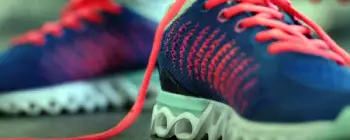
Pros:
- Plush cushioning: DNA Loft v3 foam feels cloud-like and forgiving.
- Excellent stability: GuideRails support overpronators effectively.
- Roomy fit: Wide toe box suits broader feet or bunions.
- Durable build: Lasts 300-500 miles, even for high-mileage runners.
- Wide model range: Options for neutral, stability, and trail running.
- Affordable pricing: $100-$160 range offers great value.
- APMA-approved: Podiatrist-endorsed for foot health.
- Smooth ride: High drop (10-12 mm) aids heel strikers.
- Breathable design: Mesh uppers keep feet fresh.
- Holiday styles: Fun, seasonal designs add personality.
Cons:
- Heavier weight: Models like Ghost 17 (10.1 oz) feel less agile.
- Less responsive: Lacks the bouncy feel of On Cloud.
- Traditional look: Less stylish than On Cloud’s sleek designs.
- Tight sizing: Often runs small, requiring a half-size up.
- Limited speed focus: Not ideal for fast-paced or racing runs.
- Stiff initially: Takes time to break in for some runners.
- Narrow heel: Can feel restrictive for some foot shapes.
- Less versatile: Primarily running-focused, not casual wear.
- Foam wear: Cushioning may compress over time for heavy users.
- Fewer innovations: Less cutting-edge tech compared to On Cloud.
My Running Routine with On Cloud and Brooks
I built a routine to test both brands thoroughly.
For On Cloudsurfer 2, I used it for speedwork and shorter runs (3-5 miles).
I’d lace up after a warm-up, appreciating the quick-lace system on some models for a snug fit.
The CloudTec pods gave a peppy push-off, making 400-meter repeats feel snappy.
I stored them in a cool, dry closet to protect the foam and rotated them with other shoes to extend their life (300-500 miles).
For Brooks Ghost 17, I reserved longer runs (7-10 miles) and recovery days.
I applied them after stretching, ensuring a proper fit with a half-size up.
The plush DNA Loft foam made long runs on concrete feel gentle on my joints.
I cleaned the outsoles after trail runs to maintain traction and stored them away from heat.
Rotating between brands kept my feet fresh and helped me appreciate their strengths.
Performance Breakdown
On Cloud’s CloudTec technology, with its pod-based sole, delivers a unique, responsive feel.
The Cloudsurfer 2’s 6 mm drop and 35 mm heel stack height make it ideal for uptempo runs.
I felt propelled forward during 5K races, but the narrower fit slightly pinched my forefoot on longer runs.
Durability held up for 400 miles, though heavier runners might see faster wear.
The shoes excel on roads and treadmills but lack grip on wet trails.
Brooks Ghost 17, with a 10 mm drop and 39 mm heel stack, offers a stable, cushioned ride.
The DNA Loft v3 foam absorbed impact on 10-mile runs, reducing knee strain.
Its wider base and GuideRails kept my overpronation in check, but the 10.1 oz weight slowed my pace during speedwork.
Durability matched On Cloud at 300-500 miles, with strong traction on mixed terrains.
It’s less responsive but unbeatable for long, steady runs.
Also Read: My Thoughts On Why Are Big 5 Shoes So Cheap
Comparison with Other Brands
- On Cloud Vs. Hoka
Hoka’s maximal cushioning (e.g., Clifton 9, $145) feels plusher than On Cloud’s responsive pods.
I found Hoka’s rocker sole smoother for long runs, but On Cloudsurfer 2 was lighter and snappier for speed.
Hoka suits wide feet better; On Cloud feels agile but narrow.
Choose Hoka for cushion, On Cloud for bounce.
- Brooks Vs. Hoka
Hoka’s Clifton 9 has a softer, higher stack (40 mm) than Brooks Ghost 17 (39 mm).
I noticed Hoka’s lightweight feel (7.3 oz) edged out Brooks for versatility, but Brooks’ GuideRails offered better stability for overpronators.
Pick Hoka for plushness, Brooks for support.
- On Cloud Vs. Nike
Nike’s Pegasus 41 ($140) is more versatile than On Cloudsurfer 2, with balanced cushioning.
I found Nike’s React foam less bouncy than CloudTec but more durable for trails.
On Cloud’s sleek design wins for style, but Nike fits wider feet better.
Go Nike for all-purpose, On Cloud for speed.
- Brooks Vs. Asics
Asics Gel-Nimbus 26 ($160) rivals Brooks Ghost 17 in comfort but feels firmer.
I preferred Brooks’ roomy toe box for long runs, though Asics offered better breathability.
Brooks wins for stability, Asics for lightweight durability.
Choose Asics for sprints, Brooks for steady miles.
Cost and Value Analysis
On Cloud shoes range from $130-$180, pricier than Brooks ($100-$160).
The Cloudsurfer 2’s innovative tech justifies the cost for speed-focused runners, lasting 300-500 miles with proper rotation.
Brooks Ghost 17, at $140, offers comparable durability and better value for stability seekers, especially with frequent sales at retailers.
Both brands provide 90-day return policies, ensuring confidence in your purchase.
For budget-conscious runners, Brooks delivers more bang for your buck, while On Cloud’s premium feel suits those prioritizing style and responsiveness.
Ideal Users for Each Brand
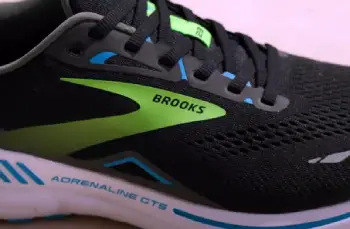
On Cloud is your pick if you’re a neutral runner in your 20s-40s chasing speed or versatility.
Its lightweight, bouncy feel suits 5K races, gym sessions, or casual wear.
If you have narrow feet and love a modern look, you’ll vibe with On Cloud.
It’s less ideal for overpronators or wide-footed runners.
Brooks shines for runners needing stability, especially overpronators or those with wider feet.
If you’re logging long miles or prioritize joint protection, models like the Ghost 17 or Adrenaline GTS 24 are perfect.
They’re less suited for speedwork or runners wanting a minimalist feel.
Addressing Common Feedback
Some runners find On Cloud’s narrow fit restrictive.
I countered this by sizing up slightly, which helped with comfort.
The stiff TPU plate in models like Cloudmonster 2 can feel rigid, so I eased into them over a week.
For Brooks, the heavier weight (10.1 oz) slows some runners down.
I used them for recovery runs to avoid this issue.
Both brands’ durability (300-500 miles) impressed me, but rotating shoes and cleaning outsoles extended their life.
Also Read: Why Are On Cloud Shoes So Popular
Frequently Asked Questions (FAQs)
Podiatrists praise On Cloud for lightweight cushioning but note limited stability for overpronators.
Yes, Brooks earns APMA approval for stability and support, ideal for overpronators.
Hoka’s Clifton 9 may edge out Brooks for plush cushioning, depending on your needs.
Not universally; On Cloud excels for speed and style but lacks Brooks’ stability.
Final Thoughts
After weeks of testing, I’m convinced both On Cloud and Brooks deliver for runners, but your choice hinges on your goals.
On Cloud’s springy, lightweight design makes you feel fast and stylish, perfect for quick runs.
Brooks’ plush, stable ride cradles your feet for long miles.
You can’t go wrong, but try them on to feel the difference.
Grab your pair—On Cloud or Brooks—and hit the road with confidence!
